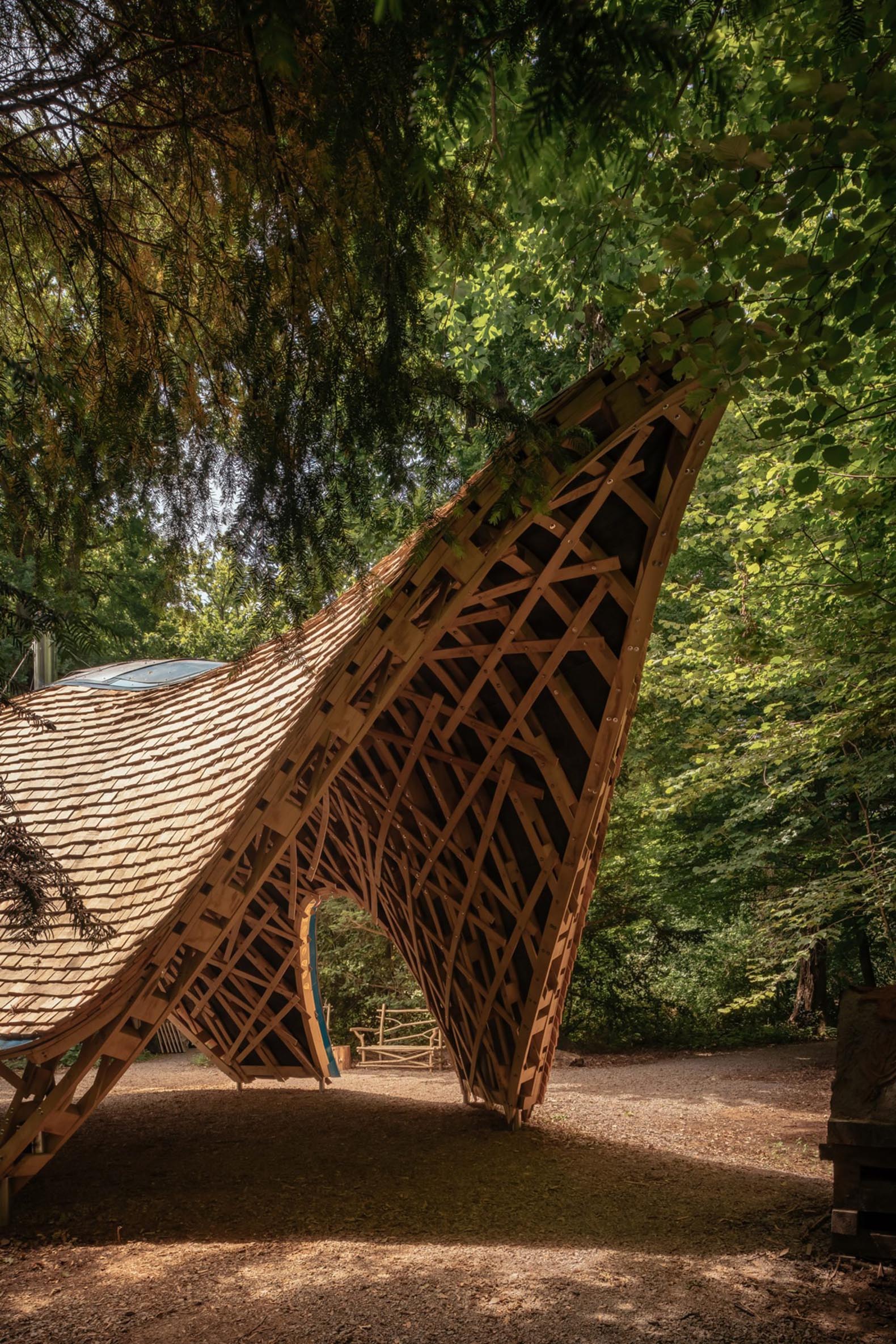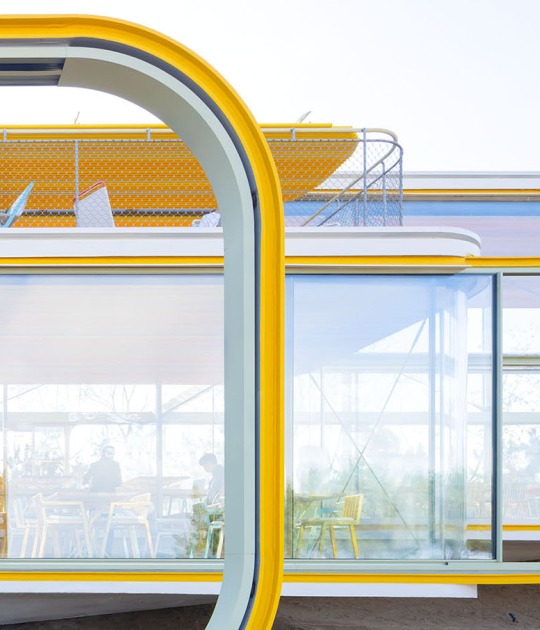The shelter was made entirely from oak felled from the arboretum, made from timber that was grown and milled on-site.
Invisible Studio working with Xylotek created an oak lath gridshell of arrayed arches with ad-hoc bracing combined to resolve the organically shaped shelter, on-site at Westonbirt Arboretum.
The site pictures show the plywood jigs that were used to enable the steam-bending process. Once steamed, the pliable oak laths were shaped over the jig and clamped in place to cool. These members formed the gridshell lattice components to enable the construction of the roof. Reclaimed aluminium sheets cover the apex of the curved roof and the edge.
 Coppice Workers’ Shelter Westonbirt Arboretum by Invisible Studio. Photograph by Jim Stephenson.
Coppice Workers’ Shelter Westonbirt Arboretum by Invisible Studio. Photograph by Jim Stephenson.
Project description by Invisible Studio
Westonbirt, The National Arboretum community shelter designed and built by many hands
An organically shaped community shelter has opened at Westonbirt, The National Arboretum in Gloucestershire, which is the product of a unique partnership between architects Invisible Studio, timber structure specialists Xylotek and hundreds of people from harder-to-reach community groups, as well as Forestry England volunteers and staff. While technically complex, the project was conceived, designed and constructed working alongside community participants with a range of abilities – demonstrating the mindful benefits of nature and co-creation. The result is an inclusive and protective space that sits comfortably in its woodland setting.
The shelter is made from trees that were due to be extracted from Westonbirt’s own collection as part of its routine woodland management cycle, as well as recycled old, aluminium signage from across the site. The project’s carbon footprint is therefore small and shows what can be achieved using locally grown and sourced timber.
The design process involved high levels of engagement from the outset, using sketches, small models, digital scanning, large-scale mock-ups and onsite fabrication to involve the community groups at every stage of the project. Considering the varying skillsets of the participants, the shelter provided opportunities for individuals to join in on a range of traditional green timber carpentry techniques, including steam bending, laminating and shingle making to build the unusual structure.
The distinctive and innovative hyperbolic paraboloid shape of the shelter will offer protection from the elements while offering important views through to the surrounding woodland. The aesthetic appears to a certain extent ad hoc but it has been deliberately created this way to allow inclusive design and offer the groups who will use the shelter a space that is non-prescriptive. The community that uses the shelter will feel a sense of ownership, while those participants involved in the build process have experienced the pride in making this project, with a positive outlook on what they can achieve next.
Piers Taylor of Invisible Studio said: The Community Shelter was conceived of a truly collaborative project, playing to the strengths of a wider team that has worked together on multiple innovative and award-winning projects both at Westonbirt (with the Tree Management Centre) and also with projects at Hooke Park and elsewhere. The shelter was won as a joint bid between Invisible Studio and Xylotek and set up so that many others from a variety of community groups would work alongside the consultants on every aspect of the project, creating something ultimately far greater than a project from a single hand.
The community shelter has been funded through generous donations from a range of sources including individuals and grants, Friends of Westonbirt Arboretum charity and investment from Forestry England.











































